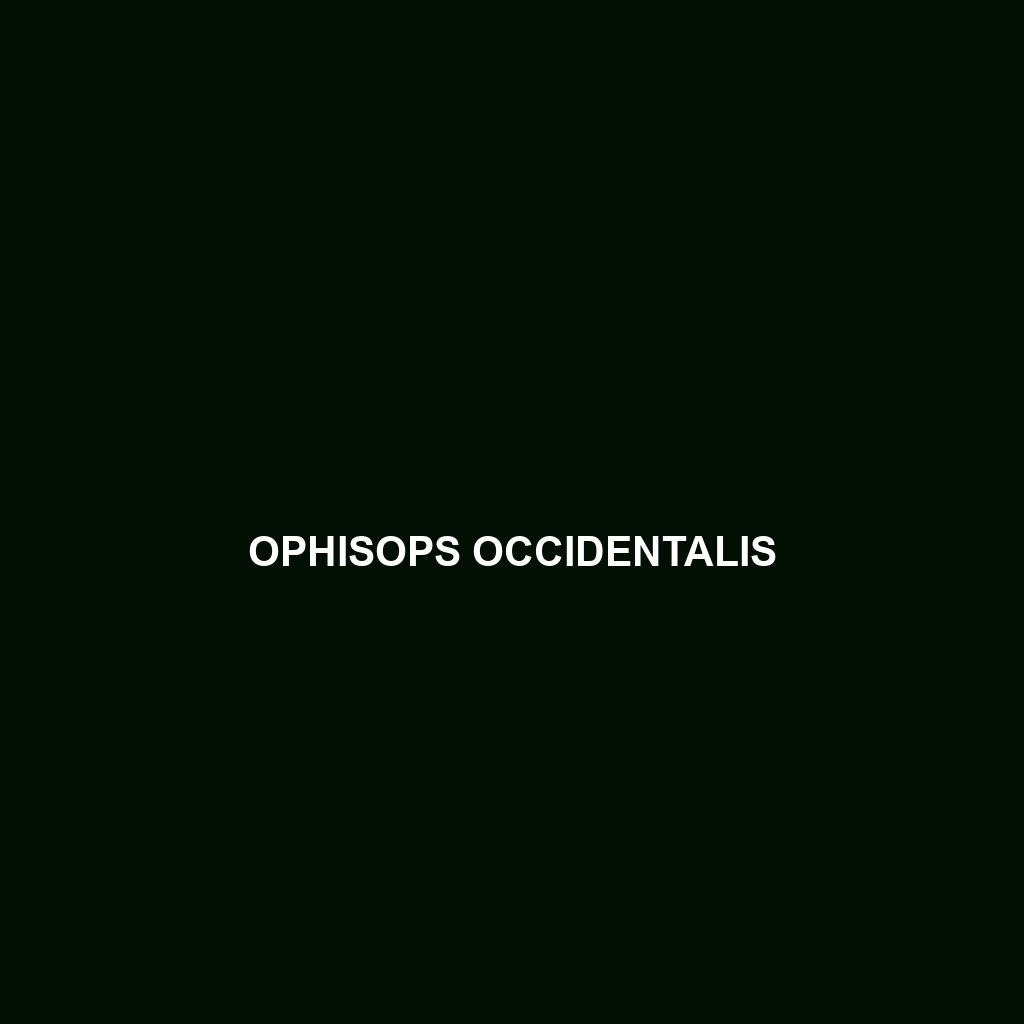Common Name
Ophisops occidentalis
Scientific Name
Ophisops occidentalis
Habitat
The Ophisops occidentalis, commonly known as the Western Snake-eyed Skink, is primarily found in the Mediterranean regions of North Africa and parts of Southern Europe. This species favors habitats that provide ample cover and warmth, commonly residing in dry, sandy areas, shrublands, and grasslands. It is often spotted in open environments where sparse vegetation allows for sunbathing while still providing hiding spots from predators. The Western Snake-eyed Skink thrives in temperate forests, shrublands, and even in disturbed areas like roadsides and gardens, which enhance its adaptability. These skinks are also well-acclimated to regions with a hot, arid climate, making them resilient to their often harsh surroundings.
Physical Characteristics
Ophisops occidentalis exhibits unique physical traits that contribute to its identification. Adult skinks typically reach lengths of about 15 to 20 cm. They have elongated bodies with a smooth and shiny appearance, which assists in camouflage among the foliage. The coloration of this species can vary but is generally a blend of brown, gray, or reddish tones, with darker stripes running along their body length. A notable physical feature is the large, distinct eye, which is often likened to being ‘snake-eyed’. This adaptation is thought to play a part in their survival, providing an advantage against predators.
Behavior
The behavior of Ophisops occidentalis is particularly intriguing, as they are primarily diurnal, actively foraging during daylight hours. These skinks display a blend of solitary and social habits, often found basking in the sun alone or in small groups. They are adept at seeking shelter in burrows or under rocks to evade potential threats. During the breeding season, which occurs in the warm months, males exhibit territorial behaviors, often engaging in displays to attract females. Their mating rituals involve intricate courtship behaviors that can include body movements and pheromone marking.
Diet
As insectivores, Ophisops occidentalis primarily feeds on a diet consisting of various insects, such as beetles, ants, and caterpillars. They are known for their agility and speed, which aids in capturing prey. Additionally, they occasionally consume other small invertebrates. Their hunting technique typically involves ambushing prey from their concealed positions, making them effective hunters in their native habitats.
Reproduction
The reproductive cycle of Ophisops occidentalis is fascinating, with breeding occurring in late spring to early summer. After successful mating, the female lays between 3 to 9 eggs, which are often deposited in sandy or loose soil that offers a suitable environment for incubation. The gestation period lasts approximately 6 to 8 weeks, after which hatchlings emerge, displaying a striking resemblance to adults but typically smaller in size. Parental care is absent after the eggs hatch, as the young are independent from birth, relying on their instincts to survive in the wild.
Conservation Status
Currently, the conservation status of Ophisops occidentalis is classified as Least Concern by the International Union for Conservation of Nature (IUCN). Despite being prevalent in its native regions, the ongoing threat of habitat loss due to urbanization and agricultural expansion poses challenges to this species. Conservation efforts focus on habitat preservation and monitoring of population dynamics to mitigate potential declines in the future.
Interesting Facts
One of the most captivating aspects of Ophisops occidentalis is its ability to regenerate its tail after losing it as a defense mechanism against predators. This impressive adaptation allows the skink to escape while confusing its captor, as the detached tail continues to wriggle. Moreover, their unique ‘snake-eyed’ appearance not only enhances their aesthetic appeal but also provides a fascinating discussion point among herpetologists and wildlife enthusiasts.
Role in Ecosystem
Ophisops occidentalis plays a vital role in its ecosystem as both a predator and prey. By feeding on numerous insects, this skink helps regulate insect populations, thereby contributing to the balance of its habitat. Furthermore, it serves as a food source for a variety of larger predators, including birds and mammals. This interconnectedness illustrates the importance of the Western Snake-eyed Skink in maintaining environmental health within its native ecosystems, which are often biodiverse and complex.
